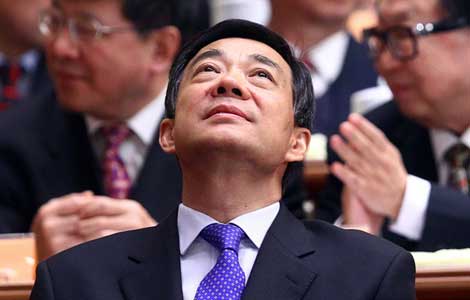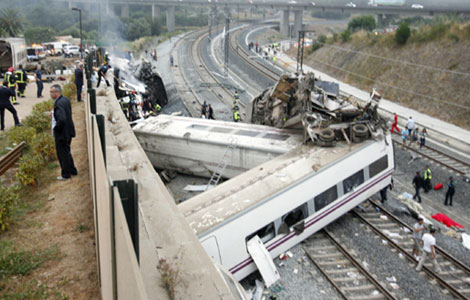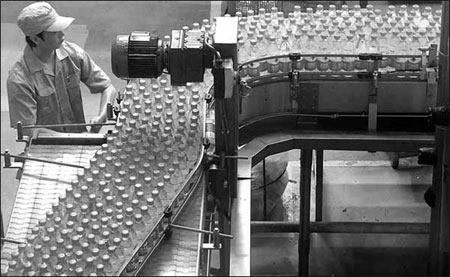Productivity 'key challenge'
Updated: 2013-07-26 08:22
By Zhong Nan (China Daily)
|
||||||||
|
China's biggest urbanization issue should be to provide training opportunities and create jobs in the manufacturing and service sectors for new urban dwellers from rural areas, experts say. Provided to China Daily |
Urbanization | Zhong Nan
Move to cities calls for new ways of thinking about jobs, services
The Chinese government should be aware that improving productivity is the key challenge facing the country as it begins to shift its economic model and embarks on a large-scale urbanization drive, said Jonathan Woetzel, director of global management consultancy McKinsey & Co.
The country's fast urbanization process and dynamic manufacturing environment have transformed the nation into the world's second-largest economy, with over 50 percent of Chinese people now living in cities. The country's urbanization rate rose 1.3 percentage points to 52.57 percent last year, according to the National Bureau of Statistics.
But there are a number of issues that need to be addressed urgently, such as the need for infrastructure to keep up with the fast development pace, fair employment opportunities, social welfare reform and environmental issues.
Under such circumstances, the Chinese government has added new urbanization goals to its newly published economic reform guidelines for 2013, and is ready to draw up a new urbanization plan for the nation by the end of the year.
"China's urbanization plan needs to consider many factors, including planning for high-density cities, the integration of migrants, city financing and performance management," Woetzel said.
"Efficient urban planning requires each city to focus on its unique competitive advantages, not every urban area should be developed in the same way. In the meantime, quality of life issues must also be considered," he added.
Since 2002, about 1.5 percent of the country's total 1.3 billion population has moved from rural areas to cities each year, and farmers without land have to find jobs in the cities to make a living, according to a report released by the Beijing-based China International Urbanization Development Strategy Research Committee.
"The major job growth is in the service sector. However, there are not enough jobs being created in this sector to employ all the new migrants," Woetzel said. "As a result, they have to find informal employment or part-time jobs, which may lead to poverty and crime among the under-educated migrants and this is a very severe challenge for Chinese society."
Woetzel believes that the city-cluster model, which reflects a city area considered as the inner city plus built-up environs, irrespective of local-body administrative boundaries, is more suitable for China, because it makes it easy to optimize resources to establish its own urbanization model.
There are mainly four models representing urbanization ideas throughout the world: super cities, such as Tokyo and Osaka; a center city with satellite cities or towns, which is the model applied in South Korea and Northern European countries; scattered cities, the typical model in the United States; and small-scale urbanization, which is the model widely used in Germany.
Woetzel said that each model has its own challenges and benefits, and while no model is perfect, he suggested that an urbanization model where cities are concentrated is the best for China, because the scattered model requires more land and is more challenging in terms of food and power security issues, and more difficult to finance.
McKinsey estimates that China will have 10 to 12 mega-cities with populations of 15 to 20 million, around which city clusters will form. A cluster consists of one mega-city and 20 to 50 other smaller cities. Most of the population will live in medium-sized cities with populations of between 500,000 and 5 million, it added.
About 70 percent of the country's population will live in small and medium-sized cities. It also forecast that by 2030, China's small cities will be the biggest contributors to its GDP.
Professor Huang Taiyan, the president of the Shenyang-based Liaoning University in Liaoning province, said the Chinese government should focus on urbanizing people, instead of urbanizing land. The government's role should be to integrate migrants, and to create both career and commercial opportunities for people from rural areas.
Urbanizing the population means creating jobs first, but the biggest issue should be to provide training opportunities and create jobs in the manufacturing and service sectors for new urban dwellers from rural areas - this has become a problem because banks are not keen to lend money to factories and service businesses, in particular small and medium-sized enterprises.
"The Chinese economy is still an investment-dominated economy, and a healthy urbanization process should be based on a steadily developed manufacturing scale, because that would offer business opportunities to service sectors such as the logistics, packaging, power and finance industries, and these sectors in fact employ the most migrants from across China," Huang said.
Huang added that financial policies should be readjusted so that banks are encouraged to lend money to small businesses, and to enable local governments to make specific budgets to spend on better housing for low-income groups, healthcare, social welfare and education projects.
In comparison with US or European cities, cities in China are generally bigger and denser. However, there is less technology than in many European cities.
Li Changping, president of the Beijing-based China New Rural Planning and Design Institute, said it is the time for the country to develop better plans to improve the quality of its urbanization process, particularly to address problems such as the inadequate services provided to new urban residents, antiquated infrastructure and imbalanced distribution of resources between mega-cities and small and medium-sized cities.
"Over the past century, global cities in the process of urbanizing have all made mistakes," Li said. Examples include the low density in Los Angeles and the low-income favelas, or ghettos, in Rio de Janeiro. He believes that certain Chinese cities are repeating some of those mistakes, especially in terms of urban sprawl, the constant construction of industrial parks and water pollution.
"There are quite a lot of technologies and useful methods that have been introduced and applied in European, US and Japanese cities because they have had more time to experiment and make improvements, so China should really grab this advantage," Li said.
Such growth opportunities have already been discovered by firms from Europe, said Florian Schmied, Shenyang board chairman of the European Union Chamber of Commerce in China.
Schmied said that around 50 European companies from Germany, France, the United Kingdom and Sweden will come to Shenyang over the next three years to form an industrial park in the Hunnan new district and develop sustainable urbanization projects.
Contact the writer at zhongnan@chinadaily.com.cn
(China Daily USA 07/26/2013 page18)

 Top DPRK leader meets Chinese vice-president
Top DPRK leader meets Chinese vice-president
 US does not plan decision on Egypt coup
US does not plan decision on Egypt coup
 Bo Xilai indicted for corruption
Bo Xilai indicted for corruption
 Korean War veterans return to peninsula
Korean War veterans return to peninsula
 Tourist safety a priority in S China Sea
Tourist safety a priority in S China Sea
 Death toll in Spain train crash rises to 77
Death toll in Spain train crash rises to 77
 Royal baby named George Alexander Louis
Royal baby named George Alexander Louis
 'The Grandmaster' takes center stage
'The Grandmaster' takes center stage
Most Viewed
Editor's Picks

|

|

|

|

|

|
Today's Top News
Scholars provide a tour 'around the world'
GM says weakness in Asia leads to profit drop
Syrian rebels ask Kerry to send US arms quickly
Flights over sea 'routine training'
US does not plan decision on Egypt coup
Congress approves NSA spying program
Japanese PM unlikely to visit Yasukuni Shrine
Girl, 2, thrown to ground; suspect detained
US Weekly

|

|








